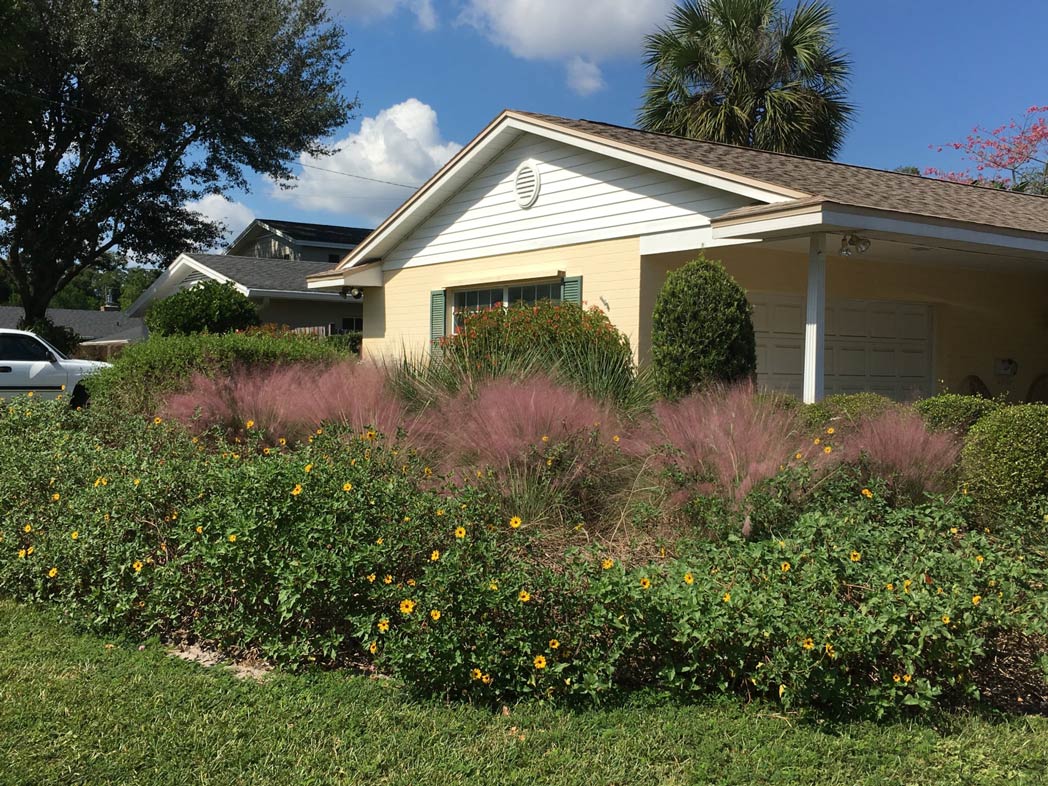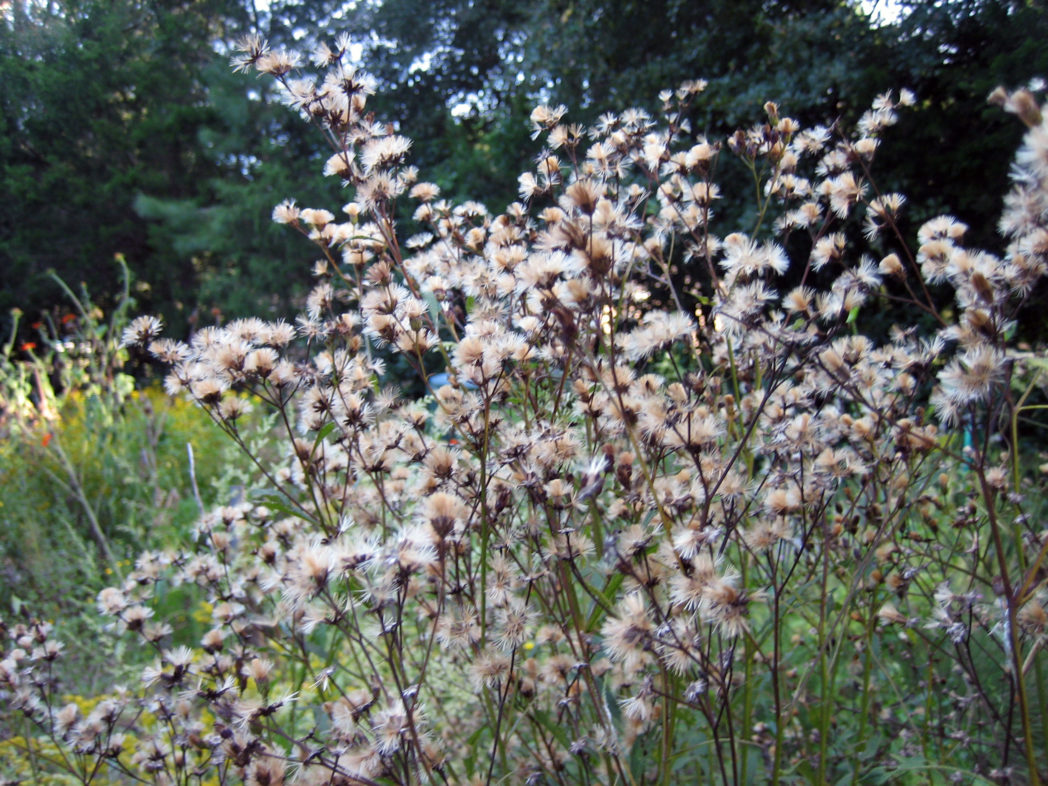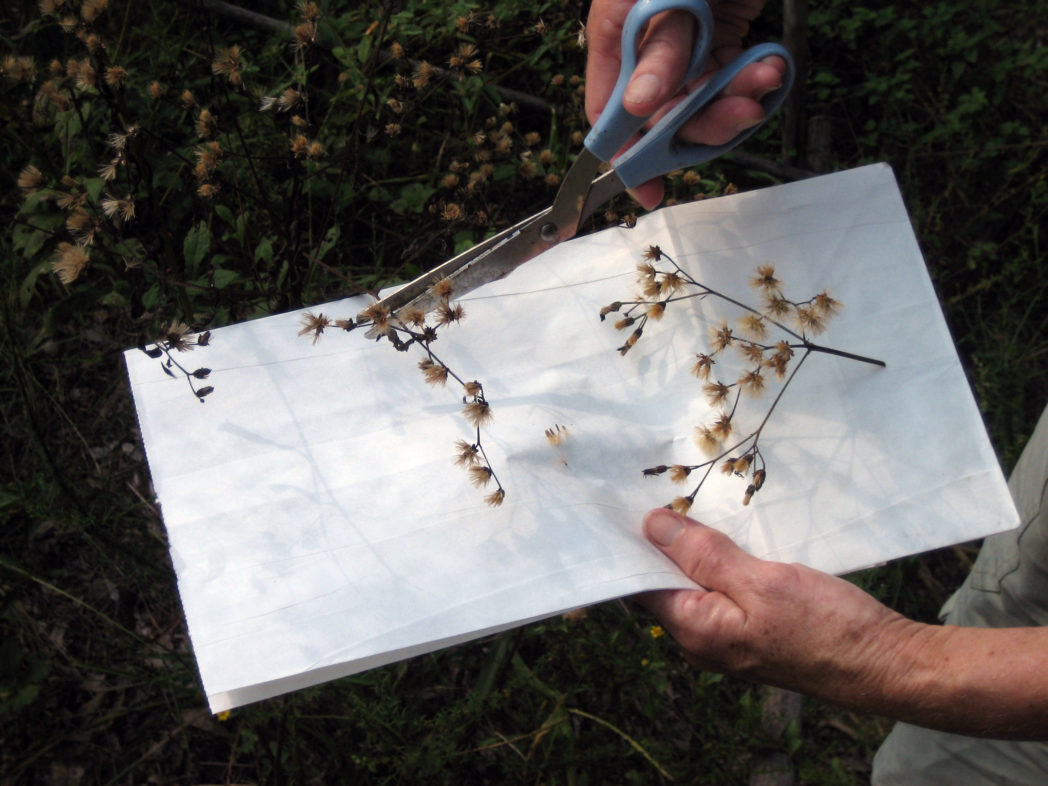Things to do in the Fall Wildflower Garden
by Claudia Larsen
All Florida gardeners look forward to fall and its invigorating cool breezes and bright skies. It’s also one of the best times to observe our beautiful Florida wildflowers. In your wildflower garden this fall, the butterflies, bees and wasps are still busy gathering nectar and preparing for migration or dormancy. Goldenrods, asters, dotted horsemint, liatris, meadowbeauty and Indian paintbrush are in their glory now. Take time to enjoy your garden up close and watch the changes of fall.
Native grasses also peak this time of year, exploding with displays of white to pink seed heads. At different times of day the sunlight makes these grasses take on a special glow, and a gentle breeze is all it takes to create a dancing, swaying motion in the garden.
Ironweed blooms early in fall with its bright purple flower heads. Later, the flowers form seed heads that expand into white puffs. Look closely to see the feathery white pappus that will carry small, dark seeds to new homes in the dirt.
There are many such interesting seeds dispersal mechanisms to be seen in the fall – exploding capsules, interesting pea-like pods, papery husks and spiny seed globes. Think about what the flower looked like prior to forming its seed, and you will truly marvel at nature.
To collect seed from your wildflower garden, check the flower stalk for seed development. Seeds are mature when they become dark brown and hard or are easily removed from their seed vessel. Seed heads may be removed by gently pulling, or the stems may be cut as in the photo. Dry seeds for several days in paper bags before sowing or storing.
Here are some other fall garden jobs to get done as summer heat begins to wane:
- Remove unwanted grasses, vines or plants that invaded or colonized during summer.
- Remove dead stems and foliage. (Remember, however, there may be beneficial larva or eggs overwintering there and that small birds eat from seed heads.)
- Some areas of your wildflower garden may benefit from a light layer of pine needles or composted or chopped leaves to deter unwanted weeds. However, it’s fine to have bare soil in your garden.
- If needed, cut herbaceous shrubs and sprawling wildflower forms to 1/3 their size.
- Collect mature wildflower seeds from garden plants.
- Sow wildflower seed in bare areas for flowers next spring.
Claudia Larsen is the owner of Micanopy Wildflowers, a native nursery that specializes in Florida native wildflowers.



